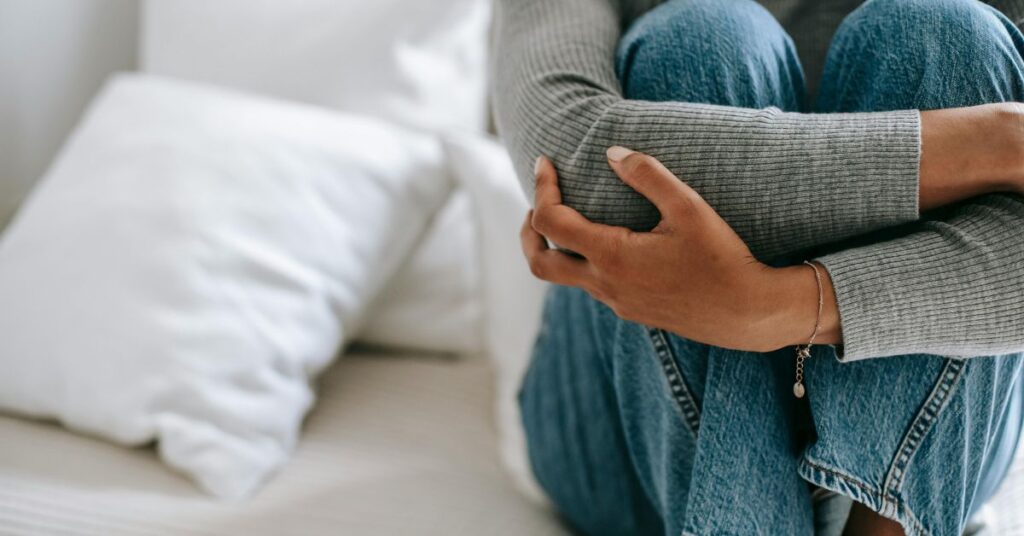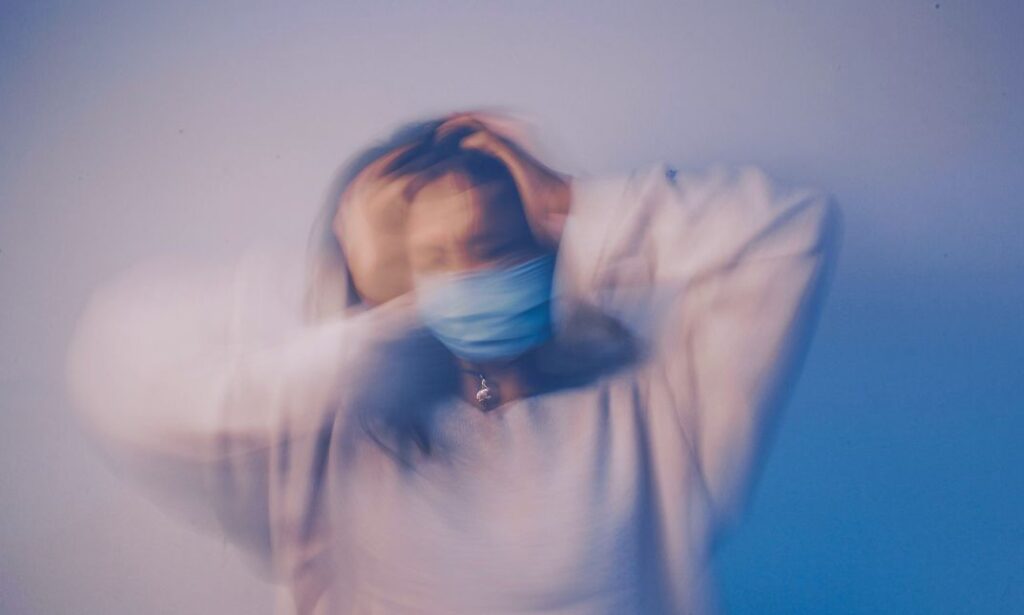Fear of heights, known as acrophobia, affects many people. But, did you know it can relate to other anxiety disorders too?
Acrophobia is more than just a simple fear. It can connect to other anxiety disorders, affecting daily life in many ways. Understanding these connections helps in better managing and treating the conditions. In this blog, we will explore how acrophobia relates to other anxiety disorders.
We will also look at why recognizing these links is important for overall mental health. This can lead to more effective treatments and improved quality of life. So, let’s dive into the connection between acrophobia and other anxiety disorders.
Topic of Contents
ToggleAcrophobia Basics
Acrophobia, the intense fear of heights, is a common anxiety disorder. Understanding acrophobia is crucial. This section delves into its definition and common symptoms. Knowing these basics can help you identify and manage this phobia better.
Definition
Acrophobia is an irrational fear of heights. It can trigger severe anxiety. This fear goes beyond normal unease. It can cause intense panic and avoidance behaviors.
People with acrophobia often avoid high places. This includes buildings, bridges, and even staircases. The fear can be so strong that it disrupts daily life. Activities like hiking or climbing ladders become impossible.
Common Symptoms
The symptoms of acrophobia vary in intensity. They can range from mild to severe. Here are some of the most common symptoms:
- Physical symptoms: Sweating, shaking, and rapid heartbeat.
- Emotional symptoms: Intense fear, anxiety, and panic attacks.
- Cognitive symptoms: Fear of losing control, fear of falling.
- Behavioral symptoms: Avoidance of heights, difficulty functioning at heights.
The table below summarizes these symptoms for quick reference:
| Type of Symptom | Examples |
|---|---|
| Physical | Sweating, shaking, rapid heartbeat |
| Emotional | Intense fear, anxiety, panic attacks |
| Cognitive | Fear of losing control, fear of falling |
| Behavioral | Avoidance of heights, difficulty functioning at heights |
Understanding these symptoms can help in recognizing acrophobia. Early identification can lead to better management and treatment options.
Causes Of Acrophobia
Understanding the causes of acrophobia can help in managing this fear. Acrophobia, or the fear of heights, affects many people. It can be a standalone condition or linked to other anxiety disorders. Let’s explore some of the key causes of acrophobia.
Genetic Factors
Genetic factors play a significant role in acrophobia. Research suggests that a family history of anxiety can increase the risk. If a close family member has acrophobia, you might be more likely to develop it too. This indicates a genetic predisposition to the fear of heights. Studies have shown that genes involved in fear response can contribute to acrophobia.
Environmental Triggers
Environmental triggers also contribute to acrophobia. Traumatic experiences involving heights can lead to this fear. For instance, a fall from a high place can instill a lasting fear. Even witnessing someone else experience a fall can trigger acrophobia. Learned behavior from parents or guardians can also be a factor. If children see their parents afraid of heights, they might develop the same fear. Additionally, lack of exposure to heights can make the fear more pronounced.
Signs Of Anxiety Disorders
Understanding the signs of anxiety disorders is crucial. These signs often overlap with other mental health conditions. Recognizing these symptoms can help in seeking proper treatment.
General Symptoms
General symptoms of anxiety disorders include excessive worry. This worry can be about various things. People may feel restless or on edge. They often have trouble concentrating. Their mind may go blank. Irritability is another common symptom. Fatigue also occurs frequently. Sleep problems are typical. People may struggle to fall or stay asleep. Physical symptoms can include muscle tension. They might experience headaches or stomachaches. Sweating and trembling are also common signs.
Specific Disorders
Acrophobia is the fear of heights. People with acrophobia might avoid high places. Panic disorder involves sudden fear attacks. These attacks come with physical symptoms. Social anxiety disorder is the fear of social situations. People may avoid social gatherings. They fear being judged or embarrassed. Generalized anxiety disorder involves excessive worry. This worry can be about many things. It lasts for at least six months. Obsessive-compulsive disorder includes unwanted thoughts. People perform repetitive behaviors to reduce these thoughts.
Shared Traits
Acrophobia, the fear of heights, shares several traits with other anxiety disorders. Understanding these shared traits can help in identifying and managing anxiety. Let’s explore the commonalities.
Overlap In Symptoms
Both acrophobia and other anxiety disorders present similar symptoms. These symptoms include:
- Rapid heartbeat
- Shortness of breath
- Excessive sweating
- Feeling dizzy or lightheaded
- Intense fear or panic
These physical responses are the body’s way of reacting to perceived danger. Such responses can be overwhelming and distressing.
Common Triggers
Triggers for acrophobia and other anxiety disorders can be quite similar. Some common triggers include:
| Trigger | Acrophobia | Other Anxiety Disorders |
|---|---|---|
| High Places | Yes | No |
| Social Situations | Sometimes | Yes |
| Confined Spaces | Sometimes | Yes |
| Large Crowds | Sometimes | Yes |
While high places are specific to acrophobia, social situations, confined spaces, and large crowds can trigger anxiety in many disorders. Recognizing these triggers can aid in better management.
Biological Connections
Acrophobia, or the fear of heights, often links to other anxiety disorders. This connection stems from various biological factors. Understanding these factors helps in managing these conditions better. Let’s dive into the biological connections.
Brain Chemistry
Brain chemistry plays a crucial role in anxiety disorders. Neurotransmitters like serotonin and dopamine regulate mood. Imbalances in these chemicals can lead to anxiety. Studies show that those with acrophobia often have altered brain chemistry. This imbalance triggers fear responses more easily.
The amygdala, a part of the brain, processes fear. In people with acrophobia, the amygdala may be overactive. This overactivity causes heightened fear responses. Understanding brain chemistry helps in treating acrophobia and related disorders.
Genetic Links
Genetics also play a significant role in anxiety disorders. Family history often reveals patterns of anxiety. If a parent has acrophobia, their child is more likely to develop it too. This indicates a genetic predisposition to fear and anxiety.
Researchers have identified specific genes linked to anxiety disorders. Variations in these genes can increase the risk of developing acrophobia. Knowing your family’s mental health history can provide insights into your own risks. Early intervention can then help manage these conditions better.
Psychological Connections
Psychological connections between acrophobia and other anxiety disorders reveal deep insights. Understanding these links helps in treating both effectively. Anxiety disorders often share common roots and symptoms. Delving into these connections uncovers patterns in thought and behavior.
Cognitive Patterns
People with acrophobia and other anxiety disorders experience similar cognitive patterns. Their thoughts often spiral into worst-case scenarios. This irrational thinking triggers intense fear. They may believe something terrible will happen if they face heights. These negative thought patterns reinforce their anxiety.
Many individuals with acrophobia also suffer from generalized anxiety disorder (GAD). The fear of heights often extends to other areas. They might worry excessively about various aspects of life. This constant worry increases their overall anxiety levels.
Behavioral Responses
Behavioral responses to acrophobia are similar to those in other anxiety disorders. Avoidance is a common reaction. People might steer clear of high places. This avoidance limits their daily activities and experiences.
Another common response is seeking reassurance. Individuals often ask others if their fears are justified. This behavior provides temporary relief but reinforces their anxiety. It prevents them from facing their fears and overcoming them.
In both acrophobia and other anxiety disorders, physical symptoms are also evident. Sweating, trembling, and rapid heartbeat are common. These symptoms make the fear feel more real and overwhelming.
Impact On Daily Life
Acrophobia, or the fear of heights, significantly affects daily life. This fear can lead to other anxiety disorders. Understanding its impact on day-to-day activities is crucial for recognizing its broader effects.
Functional Impairment
Individuals with acrophobia often face functional impairment. This means avoiding certain places or activities. Examples include:
- Avoiding high floors in buildings
- Refusing to fly in planes
- Steering clear of bridges
Such avoidance behaviors can limit job opportunities. Daily tasks become challenging. This impacts overall quality of life.
Social Consequences
The social consequences of acrophobia are notable. People might avoid social events. This leads to social isolation. For instance:
- Declining invitations to rooftop parties
- Missing out on scenic hikes
- Shunning amusement parks
This avoidance can strain relationships. Friends and family may not understand the severity. Over time, this can lead to loneliness and depression.
Understanding the impact of acrophobia on daily life helps in addressing the root causes. It paves the way for effective management and treatment.
Treatment Approaches
Acrophobia, or the fear of heights, can often coexist with other anxiety disorders. Understanding the treatment approaches for these interconnected conditions is crucial. Effective treatments can help individuals regain control and improve their quality of life. This section explores various therapeutic methods and medication options available for managing acrophobia and related anxiety disorders.
Therapeutic Methods
Several therapeutic methods can help manage acrophobia and other anxiety disorders.
- Cognitive Behavioral Therapy (CBT): CBT helps patients identify and challenge negative thought patterns. It encourages positive thinking and behavior changes.
- Exposure Therapy: This method involves gradual exposure to heights. It helps desensitize individuals to their fears in a controlled environment.
- Virtual Reality Therapy: VR therapy uses simulated environments to expose patients to heights. It provides a safe and controlled setting for treatment.
- Mindfulness-Based Stress Reduction (MBSR): MBSR combines mindfulness practices with stress management techniques. It can reduce anxiety and improve coping mechanisms.
Medication Options
Medications can also play a role in managing acrophobia and related anxiety disorders.
| Medication Type | Usage |
|---|---|
| Selective Serotonin Reuptake Inhibitors (SSRIs) | SSRIs help balance brain chemicals. They are effective for long-term anxiety management. |
| Benzodiazepines | Benzodiazepines provide quick relief for acute anxiety episodes. They are not recommended for long-term use. |
| Beta-Blockers | Beta-blockers help manage physical symptoms of anxiety. These include rapid heartbeat and trembling. |
Combining therapeutic methods with appropriate medications can offer a comprehensive approach to treatment. It is important to consult with healthcare professionals to determine the best treatment plan.
Frequently Asked Questions
What Is Acrophobia?
Acrophobia is an intense fear of heights. It can cause significant anxiety and distress. This phobia can impact daily life and activities.
How Are Acrophobia And Anxiety Disorders Related?
Acrophobia is considered a specific phobia under anxiety disorders. It shares symptoms like excessive fear and avoidance behaviors with other anxiety disorders.
Can Acrophobia Lead To Panic Attacks?
Yes, acrophobia can trigger panic attacks in some individuals. Symptoms include rapid heartbeat, sweating, and intense fear.
What Are Common Treatments For Acrophobia?
Common treatments include cognitive-behavioral therapy (CBT), exposure therapy, and sometimes medication. These therapies help reduce fear and anxiety.
Conclusion
Recognizing acrophobia can help manage other anxiety disorders. Understanding the link is crucial. Early intervention can ease symptoms and improve quality of life. Practice mindfulness and seek professional help if needed. Stay informed and support loved ones facing these challenges.
Managing anxiety is a journey. Be patient and persistent. Seek help, stay strong, and prioritize mental health.







